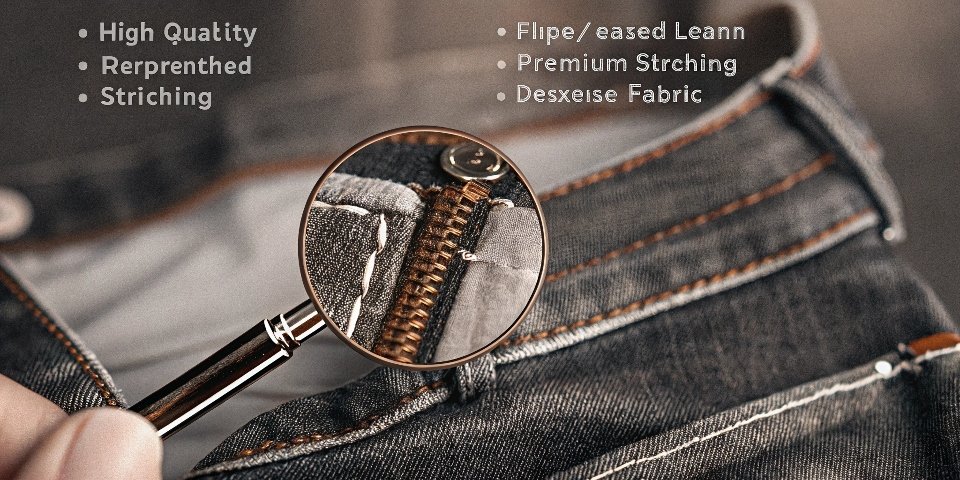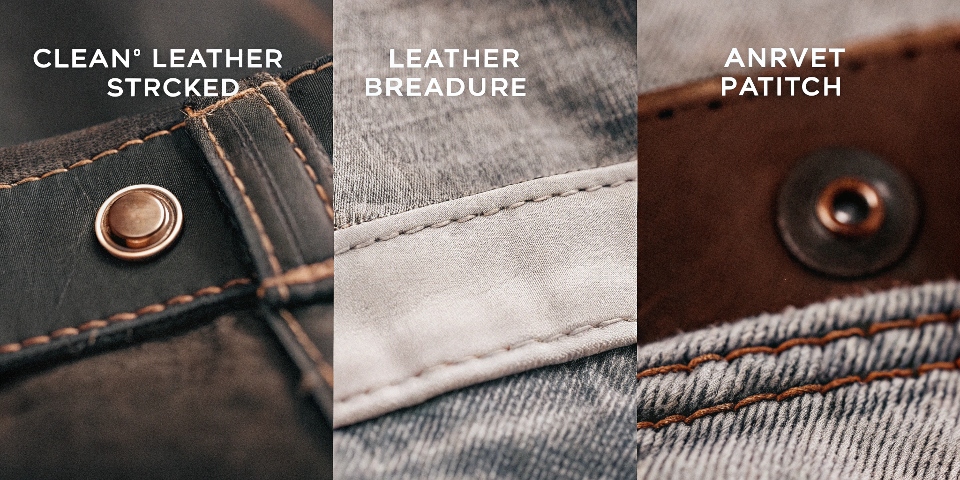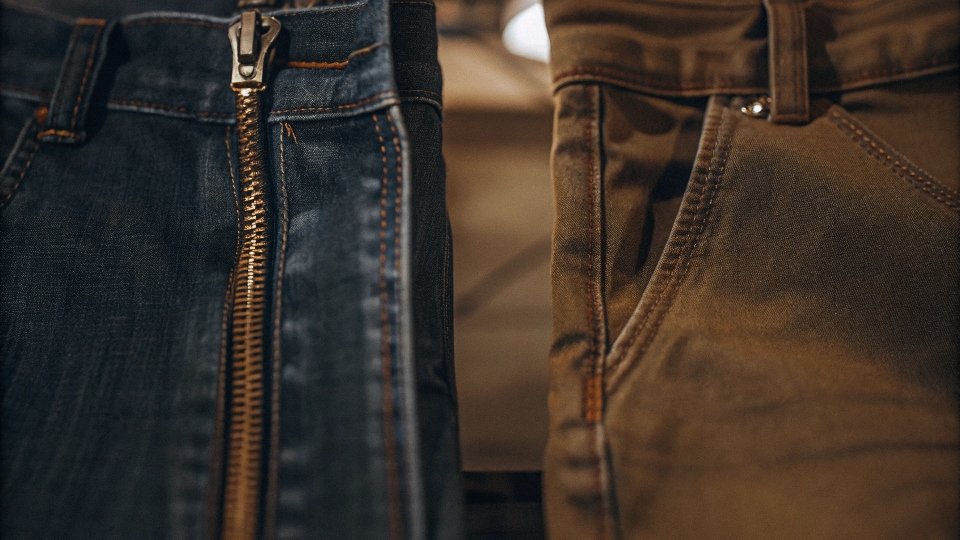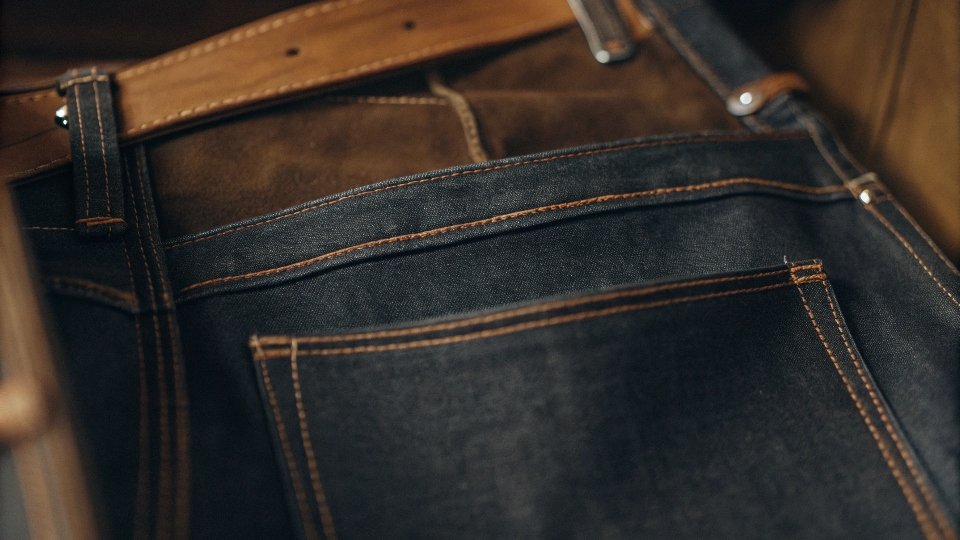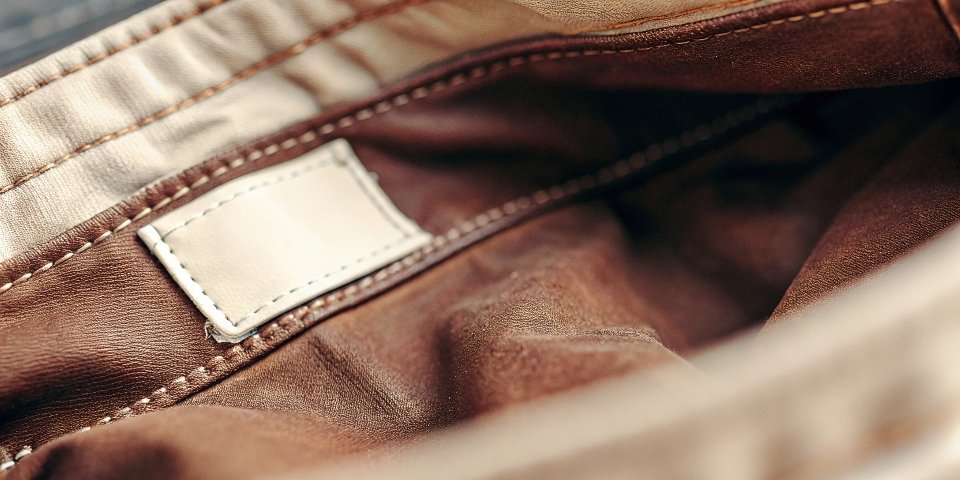You find a pair of "designer" jeans online for a price that seems too good to be true. You want to believe you've found an amazing deal, but a nagging voice says you might be about to buy a cheap fake.
To tell real from fake, focus on the details counterfeiters can't afford to replicate: high-quality hardware like YKK zippers, clean and dense stitching, premium fabric, and a perfectly executed brand patch. Fakes cut corners on all of these.
In my two decades running the DiZNEW denim factory, I've seen firsthand what goes into a genuine pair of branded jeans. A designer like Dean would never sign off on a product with a flimsy zipper or messy stitching.
He, like all great brands, understands that quality is defined by these small, crucial details. Counterfeiters bet that you won't look closely, but I'm going to show you exactly where to look.
How can you identify authentic branded jeans?
You're holding a pair of jeans, trying to figure out if they're the real deal. It feels like you need to be an expert to know what the official signs of authenticity even are.
Authentic branded jeans identify themselves through clear, consistently executed trademarks. The most reliable identifiers are the back patch, the pocket stitching, the quality of the hardware, and any specific brand tabs or logos.
Brands spend a fortune developing and protecting their unique identifiers. These are the signatures that prove authenticity. While a fake might get the general shape right, they almost always fail on the execution.
When I work with a brand, we have strict quality control for these elements. An authentic pair will be perfect. You should start by examining the most obvious trademarks. For example, Levi's has its iconic Red Tab1 and the "arcuate" double-arch stitching on its back pockets.
These are registered trademarks, and on a real pair, the stitching will be clean, symmetrical, and perfectly formed. The leather or jacron patch on the waistband is another huge clue. On a genuine pair, the material is high-quality, and the logo is stamped or printed crisply and cleanly.
On a fake, the patch is often made of cheap cardboard-like material with a blurry, poorly printed logo.
What are the telltale signs of fake jeans?
You suspect a pair of jeans might be fake, but the logo looks convincing at first glance. You worry you'll miss the subtle clues that counterfeiters leave behind.
Focus on the hardware and the fabric feel. Fakes use cheap, unbranded zippers that snag, flimsy buttons, and messy stitching. The denim itself will feel thin and lifeless compared to the sturdy fabric of a genuine pair.
Counterfeiters make their money by saving money on materials. The first place to check is the hardware, because quality metal parts are expensive. First, check the zipper. Most quality brands use zippers from trusted international manufacturers like YKK2.
Look for those three letters stamped on the zipper pull. Some high-end brands even have their own name custom-stamped on the hardware. If the zipper has no name on it or feels light and flimsy, it's a major red flag. Next, check the main button and the smaller rivets.
On real jeans, these are made of solid copper or brass, feel heavy, and have the brand name stamped cleanly. Fakes use cheap, lightweight metal that is often just plated, and the stamping is blurry and indistinct.
Finally, trust your hands. Real denim has a distinct twill weave3 and a substantial feel. Fake jeans are often made from very cheap, thin fabric that feels flat and weak.
| Component | Authentic Branded Jeans | Fake / Copy Jeans |
|---|---|---|
| Zipper | Heavy-duty, smooth operation. Often stamped with "YKK" or brand name. | Lightweight, snags easily. Usually has no brand name stamped on it. |
| Buttons/Rivets | Solid, heavy metal (copper/brass). Cleanly stamped brand name. | Lightweight, plated metal. Tinny feel. Blurry or incorrect logo. |
| Fabric | Substantial feel, clear diagonal twill weave. Durable. | Thin, flimsy, and feels cheap. Often has a flat texture. |
| Stitching | Clean, dense, and consistent. | Messy, loose threads, uneven stitch count. |
Beyond the brand, how can you spot good quality jeans?
You know how to spot a counterfeit, but how do you judge a jean's true quality? Two pairs can look similar, but one will last a decade while the other falls apart after a year.
To spot quality, ignore the brand and inspect the construction. Look for a high stitch count for durability, strong pocket bags, and reinforcement at stress points like belt loops and pocket corners (known as bar tacks).
This is where my work in the factory becomes really useful. Once you move past branding, you can judge a pair of jeans like a professional. The first thing I look for is stitch density4.
Turn over a seam. Do you see a lot of small, tight stitches per inch? That's a sign of quality and strength. Cheaper jeans use fewer stitches to save time and thread, resulting in weaker seams. Next, check for reinforcements. Look where the belt loops and pocket corners are attached to the jeans.
High-quality pairs will have heavy, thick stitches called "bar tacks5" to keep these high-stress areas from tearing. Finally, put your hand in the front pocket.
Does the material feel thick and strong, like a sturdy cotton twill? Or is it thin and flimsy, like you could poke a hole in it with your keys? Brands save money by using cheap pocket bags, but a quality manufacturer knows these details are essential for a long-lasting garment.
How can I identify a specific pair of jeans I already own?
You have a favorite pair of jeans that fits perfectly, but the outside patch is long gone. You want to buy the exact same pair again but have no idea how to identify them.
Look for the white care tag sewn into the inside seam. This tag is a blueprint of your jeans, containing the crucial model number, style code, and often the manufacturing date that you can use to find the exact pair again.
This is a problem I hear all the time. The key to identifying your jeans is almost always hidden inside them. Ignore the big leather patch on the back for a moment and look for a small, floppy tag (or a series of them) sewn into an interior seam, usually near the hip or along the inside of a pocket bag.
This is the care and content label6, but it holds much more than just washing instructions. This tag is where the factory prints all the vital information. You are looking for a key piece of data: the style or model number.
It might be labeled as "Style," "Model," "Lot," or just be a string of numbers and letters like "501-0115" or "SK-5."
Once you have this number, you have everything. You can type that exact model number into Google, and you will almost certainly find your exact pair of jeans for sale, or at least photos you can use to confirm it's the right fit and wash.
Conclusion
To tell real jeans from fakes, check the small details like hardware and stitching. To ensure quality, buy from a branded store or a trusted retailer, where authenticity is guaranteed.
-
Explore the importance of the Levi's Red Tab in identifying genuine products and its role in brand recognition. ↩
-
Understanding YKK can help you identify quality zippers in jeans, ensuring you make informed purchases. ↩
-
Learning about twill weave will enhance your knowledge of authentic denim quality, helping you avoid counterfeit products. ↩
-
Understanding stitch density helps you identify quality jeans, ensuring durability and strength in your purchase. ↩
-
Learning about bar tacks can enhance your knowledge of jean construction, leading to smarter buying decisions. ↩
-
Understanding the care and content label can help you maintain your jeans better and ensure they last longer. ↩

